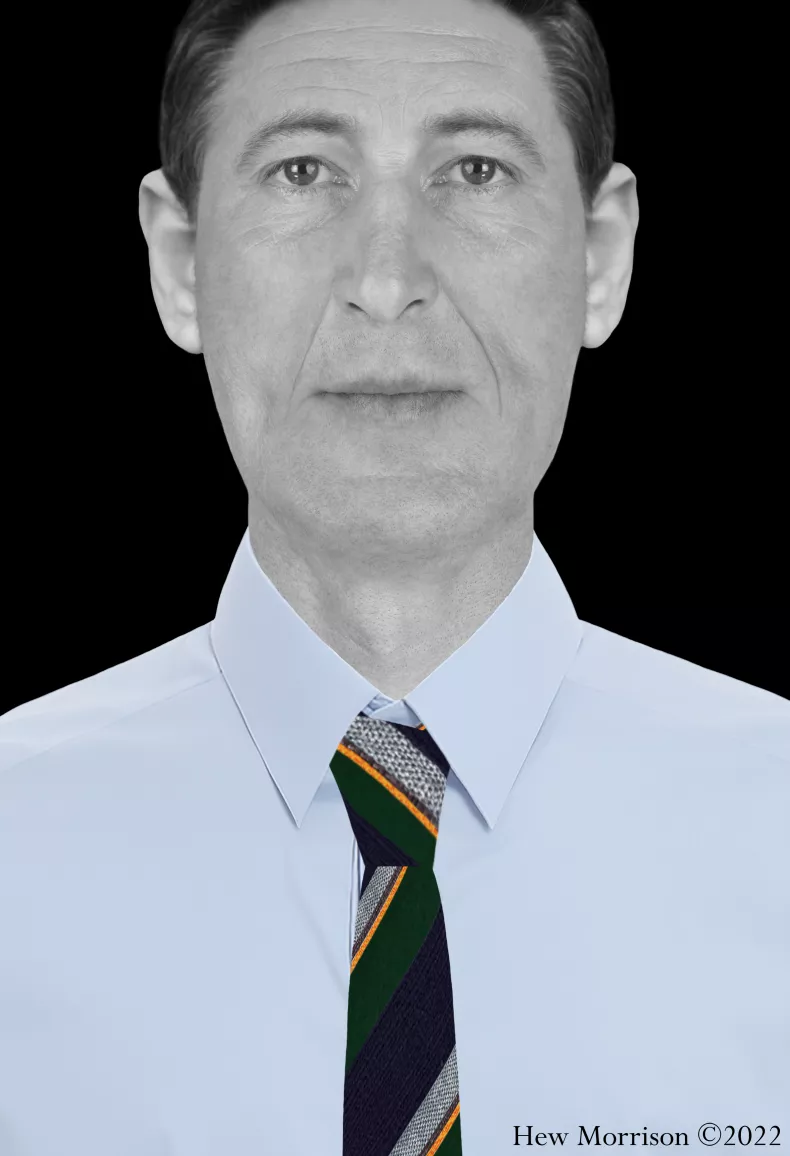Hew Morrison is a forensic artist from Scotland who specializes in creating portraits of people who are no longer alive. He uses his skills to help identify missing persons in unsolved cold cases, as well as to recreate the faces of people from ancient history. He has never actually seen the faces of the people he portrays, as they are all deceased.
Recently, he used his skills to reconstruct the face of an ancient Egyptian mummy who was discovered to be pregnant at the time of her death. The woman is believed to have died around 2,000 years ago, at 28 weeks gestation. To create his portraits, Morrison works with either CT scans or photographs of skulls. It is the anatomy of a skull that does the talking, he says, explaining that the skull forms the basis for the face he creates.

In an interview with Newsweek, Morrison explained how he did the reconstruction process. To begin the process, he uses whatever information is available about the subject, such as their age, sex, and ancestry, to determine the markers that will be placed on the skull. He then builds upon these images, creating a realistic depiction of the person's face.
Morrison's Facial Reconstruction Process
After placing the markers on the skull, Morrison adds the muscles and soft tissues of the face and sculpts them to fit the underlying bone structure. In cases where DNA data is available, he can also determine the individual's hair and eye color. In some cases, historical records can provide additional information about how the person may have looked during their lifetime. Overall, the process involves a combination of scientific analysis and artistic interpretation to create a realistic portrait of the individual.
Morrison works with several organizations to help identify deceased individuals who have remained unidentified by authorities. These include the International Cold Case Analysis Project and the U.K. missing persons' charity Locate International. In one case, he collaborated with Locate International on a cold case from 2004, when a woman's body was discovered in a river at the foot of the Wembley Point tower in London. Despite extensive efforts, the woman's identity remains unknown to this day.
After creating a portrait of the woman as part of Locate International's appeal for information, several witnesses came forward with new details about the case. According to the BBC, these witnesses reported seeing the woman looking "distressed" in the lift of the Wembley Point tower on the day of her death. This new information has added to the ongoing investigation into the woman's identity and the circumstances of her death.

Putting Faces to Ancient People
One of Morrison's other projects involved the case of a man whose body was found in the North Sea near Germany's Heligoland archipelago in 1994. The man was smartly dressed but had injuries on his head and body, and weights tied around his waist, suggesting that someone had tried to hide his body at the bottom of the sea. The man, known only as "The Gentleman," remains unidentified, and Morrison was able to create a portrait of him as part of the ongoing investigation into his identity and the circumstances of his death.
Morrison's reconstruction of The Gentleman's face was part of a renewed effort to identify him. Analysis of the man's bones revealed that he appeared to have spent most of his life in Australia, but his identity remains unknown. In addition to his work with organizations like Locate International, Morrison also takes on private clients for projects such as comparing suspect photos to CCTV footage and aiding private investigations into unsolved homicides and missing persons cases.
While Morrison typically works with clients on a commission basis, he sometimes comes across stories in the news that catch his attention. In these cases, he may approach the relevant parties, such as archaeological companies, to see if he can work on the project. One example of this was the discovery of an early Bronze Age woman in a cist burial in Achavanich, Scotland.

DNA Analysis Aligned in Forensics
As someone from Inverness, Morrison was particularly interested in this discovery and approached the archaeologist/researcher to see if they could collaborate on the project.
After completing the initial reconstruction of Ava's face, Morrison and his collaborators were able to conduct an ancient DNA analysis to update the image and make it more accurate. The analysis revealed that Ava was between 18 and 25 years old at the time of her death, and likely had brown eyes and black hair. These details were incorporated into Morrison's reconstruction. The DNA analysis also indicated that Ava was lactose-intolerant, although this cannot be seen in the face alone.
Overall, Morrison has received a positive response to his work. In some cases, the release of his facial reconstructions has led to new leads in live forensic investigations. Concerning his historical reconstructions, people have often commented on the realism of the faces and have sometimes said that they resemble people they know. By depicting the faces of individuals from the past, Morrison's work allows people to connect with their ancient ancestors and better understand their lives and experiences.
RELATED ARTICLE: Novel Forensic Technology Can Accurately Detect DNA in Small Amounts of Sample Even After 72 Hours
Check out more news and information on Forensics on Science Times.
© 2025 ScienceTimes.com All rights reserved. Do not reproduce without permission. The window to the world of Science Times.











